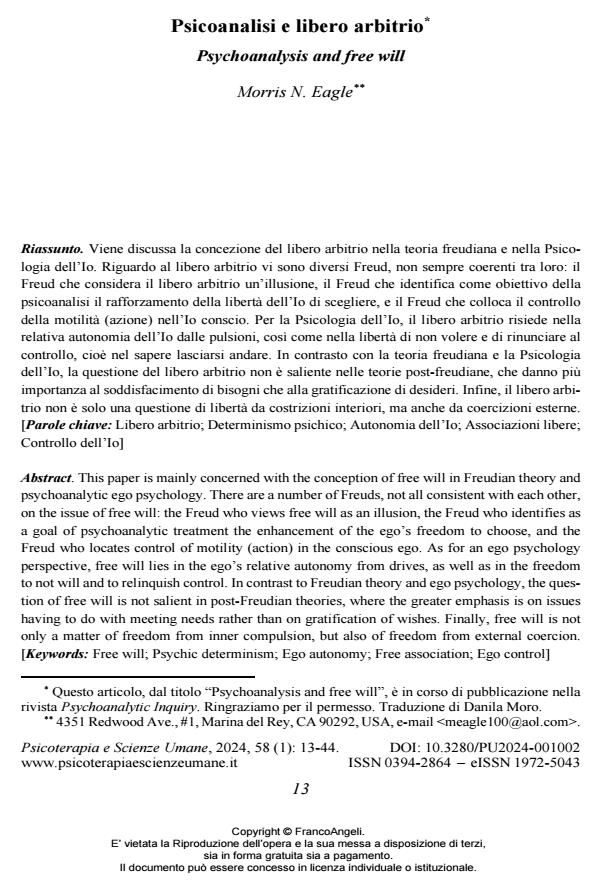Psychoanalysis and free will
Journal title PSICOTERAPIA E SCIENZE UMANE
Author/s Morris N. Eagle
Publishing Year 2024 Issue 2024/1
Language Italian Pages 32 P. 13-44 File size 167 KB
DOI 10.3280/PU2024-001002
DOI is like a bar code for intellectual property: to have more infomation
click here
Below, you can see the article first page
If you want to buy this article in PDF format, you can do it, following the instructions to buy download credits

FrancoAngeli is member of Publishers International Linking Association, Inc (PILA), a not-for-profit association which run the CrossRef service enabling links to and from online scholarly content.
This paper is mainly concerned with the conception of free will in Freudian theory and psychoan-alytic ego psychology. There are a number of Freuds, not all consistent with each other, on the issue of free will: the Freud who views free will as an illusion, the Freud who identifies as a goal of psychoanalytic treatment the enhancement of the ego’s freedom to choose, and the Freud who locates control of motility (action) in the conscious ego. As for an ego psychology perspective, free will lies in the ego’s relative autonomy from drives, as well as in the freedom to not will and to relinquish control. In contrast to Freudian theory and ego psychology, the question of free will is not salient in post-Freudian theories, where the greater emphasis is on issues having to do with meeting needs rather than on gratification of wishes. Finally, free will is not only a matter of free-dom from inner compulsion, but also of freedom from external coercion.
Keywords: Free will; Psychic determinism; Ego autonomy; Free association; Ego control
Morris N. Eagle, Psicoanalisi e libero arbitrio in "PSICOTERAPIA E SCIENZE UMANE" 1/2024, pp 13-44, DOI: 10.3280/PU2024-001002